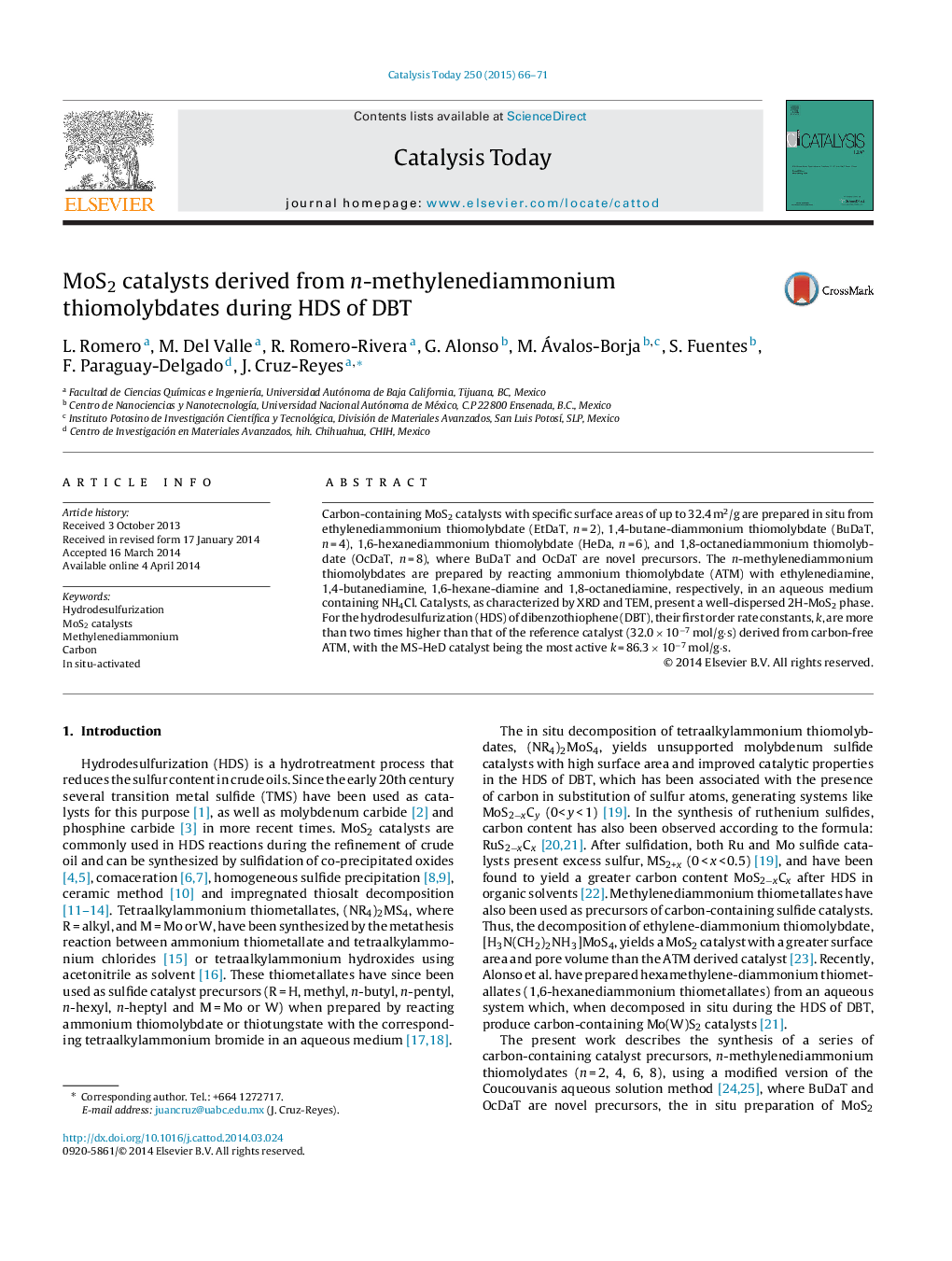| کد مقاله | کد نشریه | سال انتشار | مقاله انگلیسی | نسخه تمام متن |
|---|---|---|---|---|
| 53918 | 46989 | 2015 | 6 صفحه PDF | دانلود رایگان |

• Unsupported MoS2 catalysts are obtained from n-methylenediammonium-thiomolybdates.
• Catalysts from carbon-containing precursors yield higher activities than those from ATM.
• The MS-HeDa catalyst (from the precursor with six methylenes) has the largest k of the series.
• Excess carbon in the MS-OcDa catalyst (from the precursor with eight methylenes) lowers HDS activity.
Carbon-containing MoS2 catalysts with specific surface areas of up to 32.4 m2/g are prepared in situ from ethylenediammonium thiomolybdate (EtDaT, n = 2), 1,4-butane-diammonium thiomolybdate (BuDaT, n = 4), 1,6-hexanediammonium thiomolybdate (HeDa, n = 6), and 1,8-octanediammonium thiomolybdate (OcDaT, n = 8), where BuDaT and OcDaT are novel precursors. The n-methylenediammonium thiomolybdates are prepared by reacting ammonium thiomolybdate (ATM) with ethylenediamine, 1,4-butanediamine, 1,6-hexane-diamine and 1,8-octanediamine, respectively, in an aqueous medium containing NH4Cl. Catalysts, as characterized by XRD and TEM, present a well-dispersed 2H-MoS2 phase. For the hydrodesulfurization (HDS) of dibenzothiophene (DBT), their first order rate constants, k, are more than two times higher than that of the reference catalyst (32.0 × 10−7 mol/g·s) derived from carbon-free ATM, with the MS-HeD catalyst being the most active k = 86.3 × 10−7 mol/g·s.
Figure optionsDownload high-quality image (150 K)Download as PowerPoint slide
Journal: Catalysis Today - Volume 250, 15 July 2015, Pages 66–71